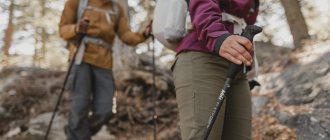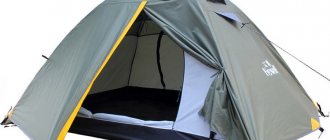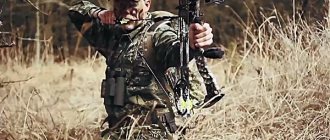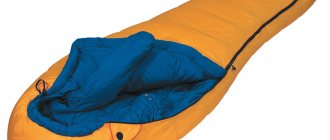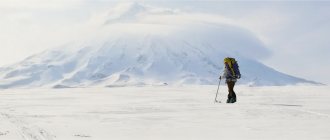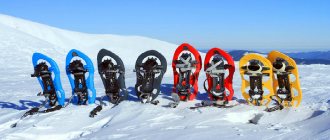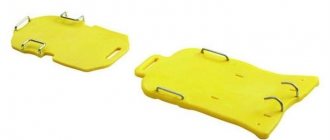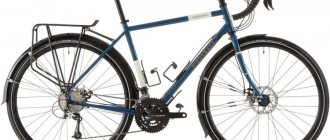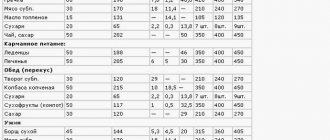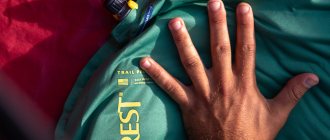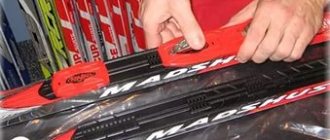Backpack
- a constant companion of any traveler.
Backpacks are used by everyone everywhere - in the city, on a picnic, on a tourist trip, on climbs, on hikes. Backpacks were invented a long time ago and have undergone significant changes throughout their history. The vast scope of application of this type of equipment has given rise to a huge variety of backpacks of various designs and purposes. Conventionally, backpacks can be divided into the following groups: expeditionary (hiking) backpacks , assault, walking, backpacks for skiers and snowboarders, backpacks for cyclists, city backpacks . Separately, there are bicycle backpacks (so-called pants) and exhaust trunks . Recently, backpacks that are recommended for various multi-sport races or for ski mountaineering. Let's see what each type of backpack is.
Expedition backpacks
Expedition backpacks
As a rule, they have a volume of more than 60 liters.
Some domestically produced backpacks even reach 140 liters. Foreign manufacturers usually do not produce backpacks larger than 100-105 liters, citing the fact that when using modern equipment, which can fill a backpack with a density of 0.7 kilograms per liter of volume, a hundred-liter backpack will weigh 70 kilograms, so it will simply be impossible to wear. Nevertheless, in our country, backpacks of large volume (more than 100 liters) are in considerable demand. I note that the volume of a backpack is almost always indicated in its name, for example “Lhotze 100” from Red Fox or Aerocontact 55+10 from Deuter . As can be seen from the example, the volume can be indicated in two options - one number or two with a “+” sign. In general, different manufacturers put different meanings into these measurements, but, as a rule, in the first case the full volume of the backpack is meant, and in the second the volume of the tube is calculated separately.
| Red Fox Lhotze 100 | Bask Python 120 | Tatonka Bison 90 | Deuter Aircontact 75+10 |
Expedition backpacks are designed to carry heavy loads over long distances. Their most important task is to correctly distribute the load across a person’s back, transferring a significant part of the load to the belt, and, consequently, to the legs. In this case, it is desirable to ensure the maximum possible ventilation of the back. Such backpacks have thick soft (and sometimes of varying hardness) lining on the shoulder straps of the belt and back. Here a problem arises: the more comfortable the manufacturer makes the backpack suspension system, the heavier the backpack , and this, of course, is not desirable. Most manufacturers give preference to a more comfortable suspension, explaining this by the fact that the resulting gain in ease of carrying more than compensates for the excess weight of the backpack. In my opinion, this is the correct approach, although there are categorical opponents of such argumentation. One way to reduce the weight of a backpack lies in the depth of its design. Backpacks can be framed or frameless. The frame is a system of metal or plastic strips (pins) running under the soft lining in the back of the backpack. If you remove the frame from the backpack, its weight will naturally decrease significantly. However, the presence of a frame makes it possible to more conveniently distribute the weight across the back; this design is also less demanding on packing things and can smooth out many mistakes made when assembling the backpack. In addition, the frame can be easily removed from most modern backpacks if necessary. But it can be useful, for example, from the frame you can make a very good tire in case of a fracture. Nevertheless, due to their light weight, frameless hiking backpacks continue to exist, develop and are in great demand.
Most expedition backpacks have a back length adjustment system, which allows for a more precise fit of the backpack to a specific person. This can be very important when carrying heavy objects for a long time. The same systems can be found on other types of backpacks.
Bauls
| Bask Wall 120 | Black Diamond Touchstone |
Exhaust trunks
designed for lifting loads on ropes during wall climbs.
They have a simple design, equipped with straps for carrying on the back (on approaches) and slings for attaching to a rope. Made from the most durable and wear-resistant materials. Inside they have one large compartment and one or more pockets for small items. Actively used in speleology. Here they are called transport bags (or simply transport bags). In fact, they are the only means of carrying things in caves. They are produced, for example, by Petzl , although more often they are sewn independently. Very convenient transporters made from advertising banners; if you glue the seams of such a transporter, you can achieve water resistance.
| Petzl Classic | Samopal from a banner |
What is backpack fitting?
For comfortable, convenient use of the accessory, all its structural elements must be adjusted to your own parameters. The adjustment is carried out in clothes with a loaded backpack. Brief instructions for fitting the product are presented in the table.
| Type of fitting of structural elements | Algorithm of actions |
| Adjusting the waist belt | 1. Fasten the belt. 2. Lean forward. 3. Tighten the straps until the backpack fits snugly against your back |
| Tightening the shoulder straps | 1. Lengthen the shoulder straps. 2. Put on a backpack. 3. Tighten the straps |
| Adjusting the attachment point of the shoulder straps | 1. Fill the main compartment. 2. Mark the side of the mounting offset. 3. Pull the strap in the opposite direction |
Fitting is mandatory for a tourist or expedition backpack. Correct adjustment of the belts and belts will ensure comfortable use of the product while covering long distances. Adjustment is carried out according to body parameters before first use.
To summarize, it is worth noting that a backpack is a universal accessory, suitable for study, a walk, a romantic date or a hiking trip.
Convenience, comfort, durability, spaciousness are the main properties of a quality product, and it is these that the user should pay attention to first. In general, in the question of which backpack is better to choose, preference should be given to products made from wear-resistant, durable, waterproof materials, with thoughtful design elements and reliable fittings
Assault
Assault backpacks
designed for carrying loads directly during the ascent. Sometimes they are used on approaches. The volume of these backpacks usually varies from 40 to 60 liters. For these backpacks, their weight is very important. Basically, the less it weighs, the better. They are equipped with narrower and thinner shoulder straps and a belt, and a simpler back.
| Red Fox Asymmetric 45 | Bask Smart 45 | Vau De Expedition Rock 45+10 | Deuter DSAlpine 30 |
Often the belt on such backpacks is removable. This allows you to further reduce weight if necessary, and also makes it easier to lift the backpack if you have to pull it out on a rope. An important property for such backpacks is a developed system for hanging equipment. It allows you to place part of the equipment in close access directly on the surface of the backpack. Thanks to the developed hanging system, with the help of such a backpack you can sometimes carry a significant amount of equipment and things.
General requirements
Before choosing a hiking backpack, you need to calculate the duration of the trip, find out the weather conditions, the volume and weight of the cargo. For mountain trips, special mountaineering models are used; expedition models are larger in volume. Classic hiking types are called trekking. They are designed for maximum convenience for tourists and independent travelers.
General requirements for hiking backpacks:
Useful volume. It may vary depending on the amount of equipment and its stowage. After packaging, there should be up to 5% free space inside. Protection from moisture and mechanical damage. The material is dense and does not allow moisture to pass through. It must also maintain its integrity after contact with objects or falls from a small height. Pockets and compartments. They are needed for sorting equipment and further convenient access to items
It is important that there are not too many of them, otherwise the useful volume will be artificially reduced. Ventilation and suspension system. During a long journey, moisture should not accumulate on the inside; if there is close contact with the back, abrasions will not form
You need to study the location of the belts and the comfort of the hip belt.
After analyzing the main characteristics, the models are studied. The easiest way to choose a hiking backpack is to test it in practice. To do this, it is recommended to try it on before purchasing. After purchasing, it is advisable to fully equip the model and check its comfort and even weight distribution.
Important: each type is designed for the maximum permissible weight. Exceeding it can lead to damage to the tourist backpack and loss of its original shape.
Walking
| Red Fox Ozone | Tatonka Breva 20 | Deuter ACT Trail 32 | Vau De Aracanda |
Walking backpacks
They usually have a relatively small volume - no more than 40-45 liters. Designed for short (1-2 days) outings and various tourist trips and excursions. These backpacks have a simple design. Mounting is usually limited to telescopic pole mounts. The straps, waistband and padding on the back are not thick. Back ventilation is well thought out. The back length on such backpacks is extremely rarely adjusted.
For running or riding
For multisport
| Red Fox Racer 40 | Bask Edge | Tatonka Track Pack 15 | Deuter Race |
Multisport backpacks
They are the most lightweight designs of small (up to 30 liters) volume. Some of them come immediately complete with a drinking system. The main requirements for such backpacks are minimal weight, ease of carrying and good ventilation of the back and shoulders.
Snowboard and ski
Backpacks for skiers and snowboarders
They also have a small volume, which is designed to accommodate things necessary for skiing both on and off-piste.
Such backpacks often have special pockets for avalanche rescue equipment (shovel and avalanche probe), and a soft pocket for a mask .
| Bask Back Country | Deuter Razor 25 |
There are places for attaching skis, snowboards, and helmets . Sometimes ski backpacks are equipped with an additional entrance from the back, which allows you to get to the contents of the backpack without removing your snowboard or skis . Some models have mounts for ice tools. Not so long ago, ski backpacks from some manufacturers introduced a special back that is certified protection in case of a fall.
Ski mountaineering
| Vau De Ski Race Ultra 12 |
Backpacks for ski mountaineering
similar to multisport
backpacks , but have attachments for skis and other special equipment.
What to look for when buying a backpack
• Slings and stitching. Slings are dense, most often nylon tapes, 25 to 50 mm wide, used to tighten the backpack (reduce its volume). They are the main part of all straps and fastenings. It is important that the slings are firmly sewn; repairing a backpack while hiking is very unpleasant and inconvenient. The slings should not be very soft or very hard. Hard ones are difficult to tighten, but soft ones, on the contrary, will constantly slip and, moreover, will wear out quickly. Look carefully at how the straps are sewn to the backpack. You can always try on a backpack in a normal store. Ask him to load it heavier, 20 kilograms, and see how the seams look under load. Only a loaded backpack can you really “feel” for yourself! Without this, in the absence of experience, even a very bad backpack may seem bearable. The side and bottom tie down straps need to be long enough to be able to attach a mat or tent to them.
• Straps and belt.
The straps should be wide, at least 6 cm, so that they do not pinch or slip off. Contrary to popular myth, most of the weight of a backpack falls not on the shoulders, but on the muscles of the hips and pelvis. Therefore, it is important that the waist belt is comfortable for you. It is believed that it should be fastened at approximately the level of the navel, but in practice, many find it more convenient to tighten the belt lower, approximately at the level of the ilium. The inside of the belt should be soft and tight, and the outside should be quite hard. If you are buying a backpack for the first time, it is better to choose a model with an adjustable suspension height. The settings of the straps and belt are very individual, depending on the anatomical structure, and sometimes you need to try several different fit options to choose the most comfortable one.
• Number of flaps and pockets. All modern travel backpacks have at least three compartments: the main compartment, the bottom flap and the top flap. It is convenient if there is a zipper between the bottom flap and the main compartment: in this case, the dividing partition can be removed if necessary. It is also better if the top flap is on adjustable detachable straps: then it can be raised and lowered depending on the load of the backpack, and when unfastened it can be used as a bag for radial excursions.
Side pockets are convenient for various small items and things that you may need quick access to (flashlight, napkins, knife, etc.). Same for the front pocket. Sometimes pockets are sewn to the waist belt for important current little things - money, phone, documents, napkins. If your route involves a long transfer with transfers, such pockets will not be superfluous. Some backpacks have an additional “entry” at the front of the backpack. This can be convenient if you need to get something from the very bottom or, conversely, shove small things into every corner of the free space.
• Accessories. Primarily zippers and pull tabs. There are metal ones, but most modern backpacks use high-quality plastic, which is much lighter than metal, but does not lose any of its properties. No matter how easy your hike may be, the conditions there are still not ideal. You will open and close the backpack in the cold, in the heat, in the rain, having thoroughly rolled it in dust and dirt. Therefore, the zippers should be wide, and it would be nice if they had firmware to prevent jamming. Ribbons should be sewn to the tabs to extend them, otherwise you won’t be able to handle the zipper with your gloved hands. Check all the zippers in the store. If the zippers jam even a little when you buy them, it’s better to choose another model. Pay attention to the buckles (fastex), especially the waist and chest belts - you will have to unfasten and fasten them many times a day. The buckles should snap into place with some, but slight, force. It shouldn't be very easy to open them, but it's better if you can do it with one hand. Put 2-3 spare fastex in the repair kit.
• Moisture protection. It's rare to hike without a single rainfall. You should definitely have rain protection on your backpack - this is a waterproof bag. As a rule, it comes with a backpack (but can be purchased separately). Be sure to check its availability!
• And a little advice. If you are going to buy your first travel backpack, look at specialized travel stores, not just sports ones. There is a chance that the sellers there are also tourists, and they will actually help you and not sell you anything. In any case, now you yourself know a lot about backpacks.
If you still have questions about choosing a backpack in general, or for a specific route, write to us, we will definitely help you find answers to them
